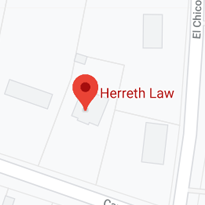Falls are commonly associated with nursing home stays. 40 percent of patients check into long-term care facilities after a fall, and 60 percent of all patients fall while they are there.
Older people are greatly at risk for falls as well as serious fall injuries. Age-related Macular Degeneration impairs the straight-ahead vision which many people need to avoid common hazards, like wet spots on floors. And, nearly all nursing home residents have pre-existing conditions. Otherwise, they probably would not be in the facility to begin with.
Because of these enhanced risks, a Weatherford personal injury attorney might be able to obtain substantial compensation in nursing home fall cases. More importantly, a lawyer can help victims obtain justice.
Legal Duty
Texas law divides property owner responsibility for things like falls, swimming pool drownings, and dog bites into three categories based on the relationship between the victim and owner. The closer the relationship, the higher the duty.
Nursing home residents are clearly invitees. These people have express or implied permission to be on the land, and they benefit the owner in a tangible or intangible way.
Since the relationship is close, the duty is high. If the victim was an invitee, the owner had a duty of reasonable care. That’s one of the highest responsibilities in Texas law.
Nursing home visitors are arguably invitees as well. These individuals typically lift residents’ spirits, and the owner benefits as a result. The same legal duty applies in these situations as well.
Licensee and trespasser are the other two categories. Licensees have permission but there is no benefit; trespassers have neither permission nor benefit. If the victim was a licensee, the owner had a responsibility to warn about latent (hidden) defects, like loose stairway rails. If the victim was a trespasser, the owner generally had no duty.
Establishing Knowledge
Theoretical legal responsibility is not enough. The owner must also have actual or constructive knowledge (should have known) about the hazard which caused the fall. There are basically two ways to establish knowledge:
-
Direct Evidence: Restroom cleaning reports, unpaid repair invoices, and other smoking guns usually emerge during a lawsuit’s discovery process.
-
Circumstantial Evidence: This evidence usually involves the time-notice rule. Constructive knowledge is more likely if the wet floor or other hazard remained in place for a relatively long time.
On a related note, the Texas Supreme Court recently diluted the res ipsa loquitur doctrine. So, victims often need to produce a witness who saw the fall.
Nursing home falls often involve serious injuries. For a free consultation with an experienced personal injury attorney in Weatherford, contact Herreth Law. We do not charge upfront legal fees in these cases.

